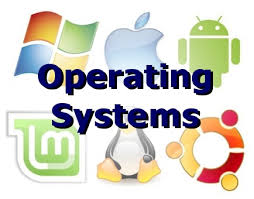 13. What is meant by arm-stickiness?
13. What is meant by arm-stickiness?
If one or a few processes have a high access rate to data on one track of a storage disk, then they may monopolize the device by repeated requests to that track. This generally happens with most common device scheduling algorithms (LIFO, SSTF, C-SCAN, etc). High-density multisurface disks are more likely to be affected by this than low density ones.
14. What are the stipulations of C2 level security?
C2 level security provides for:
Discretionary Access Control
Identification and Authentication
Auditing
Resource reuse
15. What is busy waiting?
The repeated execution of a loop of code while waiting for an event to occur is called busy-waiting. The CPU is not engaged in any real productive activity during this period, and the process does not progress toward completion.
16. Explain the popular multiprocessor thread-scheduling strategies.
Load Sharing: Processes are not assigned to a particular processor. A global queue of threads is maintained. Each processor, when idle, selects a thread from this queue. Note that load balancing refers to a scheme where work is allocated to processors on a more permanent basis.
Gang Scheduling: A set of related threads is scheduled to run on a set of processors at the same time, on a 1-to-1 basis. Closely related threads / processes may be scheduled this way to reduce synchronization blocking, and minimize process switching. Group scheduling predated this strategy.
Dedicated processor assignment: Provides implicit scheduling defined by assignment of threads to processors. For the duration of program execution, each program is allocated a set of processors equal in number to the number of threads in the program. Processors are chosen from the available pool.
Dynamic scheduling: The number of thread in a program can be altered during the course of execution.
17. When does the condition ‘rendezvous’ arise?
In message passing, it is the condition in which, both, the sender and receiver are blocked until the message is delivered.
18. What is a trap and trapdoor?
Trapdoor is a secret undocumented entry point into a program used to grant access without normal methods of access authentication. A trap is a software interrupt, usually the result of an error condition.